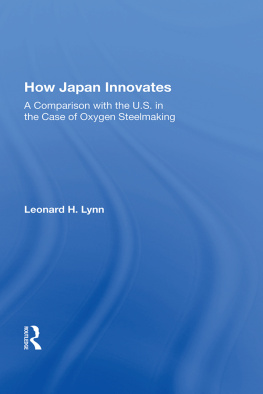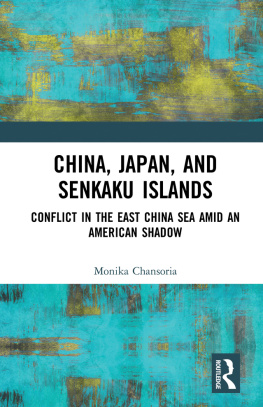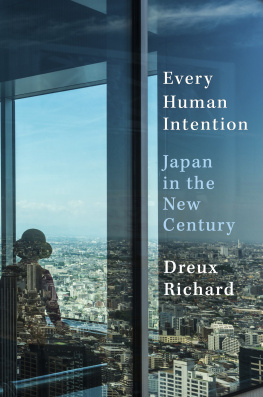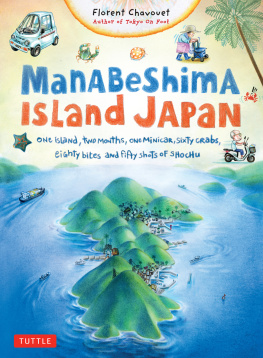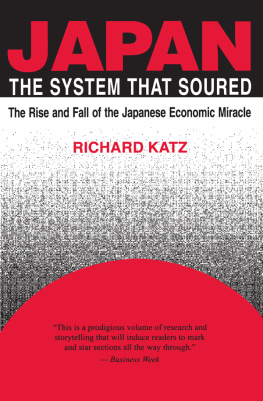THE HUMAN FACE OF INDUSTRIAL CONFLICT IN POST-WAR JAPAN
Japanese Studies
General Editor: Yoshio Sugimoto
Images of Japanese Society: Ross E. Mouer and Yoshio Sugimoto
An Intellectual History of Wartime Japan:
Shunsuke Tsurumi
A Cultural History of Post-war Japan:
Shunsuke Tsurumi
Beyond Computopia: Tessa Morris-Suzuki
Constructs for Understanding Japan:
Yoshio Sugimoto and Ross E. Mouer
Japanese Models of Conflict Resolution:
S. N. Eisenstadt and Eyal Ben-Ari
Changing Japanese Suburbia: Eyal Ben-Ari
The Rise of the Japanese Corporate System:
Koji Matsumoto
Science, Technology and Society in Post-war Japan:
Shigeru Nakayama
Group Psychology of the Japanese in Wartime:
Toshio Iritani
Enterprise Unionism in Japan:
Hirosuke Kawanishi
Social Psychology of Modern Japan:
Munesuke Mita
The Origin of Ethnography in Japan:
Minoru Kawada
Social Stratification in Contemporary Japan:
Kenji Kosaka
Sociology and Society of Japan:
Nozomu Kawamura
Diversity in Japanese Culture and Language:
John C. Maher and Gaynor Macdonald
Difference in Modernity: Social Theory and Contemporary Japanese
Society: John Clammer
Kanji Politics: Nanette Gottlieb
Migrant Workers in Japan: Hiroshi Komai
Japanese Encounters with Postmodernity: Johann R Arnason and Yoshio Sugimoto
Hibakusha Cinema: Hiroshima, Nagasaki and the Nuclear Image in Japanese Film:
Mick Broderick
Foreign Workers and Law Enforcement in Japan: Wolfgang Herbert
Social Theory and Japanese Experience: Joham P. Arnason
The Human Face of Industrial Conflict in Post-war Japan:
Hirosuke Kawanishi
THE HUMAN FACE OF INDUSTRIAL CONFLICT IN POST-WAR JAPAN
edited by
Hirosuke Kawanishi
First published in 1999 by
Kegan Paul International
This edition published 2013 by Routledge
2 Park Square, Milton Park, Abingdon, Oxon, OX14 4RN
711 Third Avenue, New York, NY 10017
Routledge is an imprint of the Taylor & Francis Group, an informa business
Kegan Paul International 1999
All rights reserved. No part of this book may be reprinted or reproduced or utilized in any form or by any electronic, mechanical or other means, now known or hereafter invented, including photocopying and recording, or in any information storage or retrieval system, without permission in writing from the publishers.
ISBN 071030563X
British Library Cataloguing in Publication Data
The human face of industrial conflict in post-war Japan.
(Japanese studies series)
1. Labor disputes Japan History 20th century
2. Industrial relations Japan History 20th century
I. Kawanishi, Hirosuke, 1942
331.89295209045
Library of Congress Cataloging-in-Publication Data
Sengo Nihon no sgi to ningen. English
The human face of industrial conflict in post-war Japan/edited
by Hirosuke Kawanishi.
p. 287 cm. 23.4 (Japanese studies)
Includes bibliographical references and index.
ISBN (invalid) 071030563X (alk. paper)
1. Labor disputesJapanHistoryCase studies. 2. Trade-unionsJapanHistory. I. Kawanishi, Hirosuke, 1942 II. Title. III. Series.
HD5427.A6S4413 1997
This volume first appeared in Japanese as Sengo Nihon no Sgi to Ningen (1986). Published by Nihon Hyronsha in Tokyo it included the reflections of nine union leaders who had taken their unions through some of Japans most important post-war industrial disputes. In 1983 each of the leaders came to my student seminar at Chiba University near Tokyo.
The talks were recorded and then transcribed with two aims in mind. One was to provide information on the events which led to the formation of Japans industrial relations as we know them today. During the 1950s and early 1960s a number of Japans key labour unions lost a succession of campaigns to establish and to defend what they saw as the natural rights of their members. Many of the unions experienced schisms, and the end result was a fundamental shift in the balance of power between labour and management.
The second aim was to provide a public record of the processes through which the struggles were waged. In recent years it has been popular for writers to glorify the achievements of Japanese-style management without any reference to the way in which the present system of industrial relations was forged out of struggles in the workplace. The leaders who spoke at my seminars provided a very important corrective to the glossy picture which is often painted of work relations in Japans large firms.
This volume may be read as a companion to the other volume I have in Kegan Paul Internationals Japanese Studies Series, Enterprise Unionism in Japan (translated by Ross Mouer and published in 1992). Whereas the earlier volume focused on a number of case studies highlighting the way enterprise unions actually functioned in many Japanese firms in the 1970s and early 1980s, this volume provides an historical account of how unionism evolved in Japan during the 1950s and 1960s.
Following Japans defeat in the Second World War in 1945, it was common to see work relations in Japan as representing a set of interpersonal interactions which had been directly transplanted from Japans feudal past. Those interactions were viewed critically along with the Emperor system and the militarism which had taken Japan into the war. The emphasis between 1945 and 1970 was on fundamentally altering those institutions and on democratising Japanese society.
In the 1970s Japan came to be seen as one of the advanced capitalist economies. As other capitalist societies came to experience prolonged stagnation following the oil shocks of the 1970s, Japan seemed to sail through the storms without too much trauma. It emerged more competitive than ever, and its industrial relations were lavishly praised for providing the flexibility necessary for firms to adjust to the new cost structures. Much of that flexibility was attributed to the systems of lifetime employment, to seniority wage structures and to enterprise unionism. These were seen as providing the institutional basis for cooperative or collaborative relations between management and workers in Japan.
In the 1980s these practices came to be widely regarded as a model for steering economic reform both in the highly advanced capitalist economies and in the developing world. Although some doubts began to appear in the early 1990s, Japan continues to command the most competitive economy in the world; the value of the yen has continued to rise and Japan now records the highest levels of per capita income. In this context, the same basic features of Japanese-style management have come to be reformulated in various ways. Today Japanese-style management is synonymous with consensual and responsive work practices but with high levels of corporate identity in the literature on industrial relations and management.




